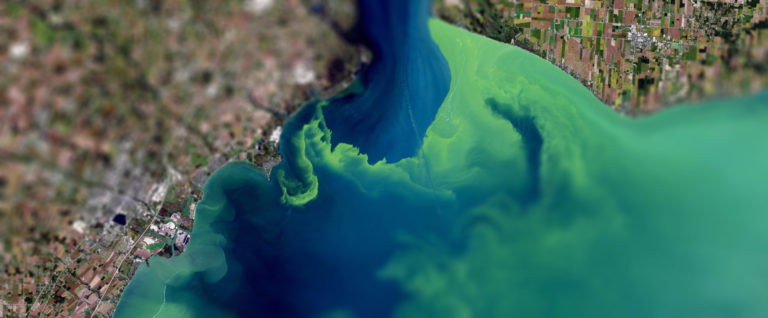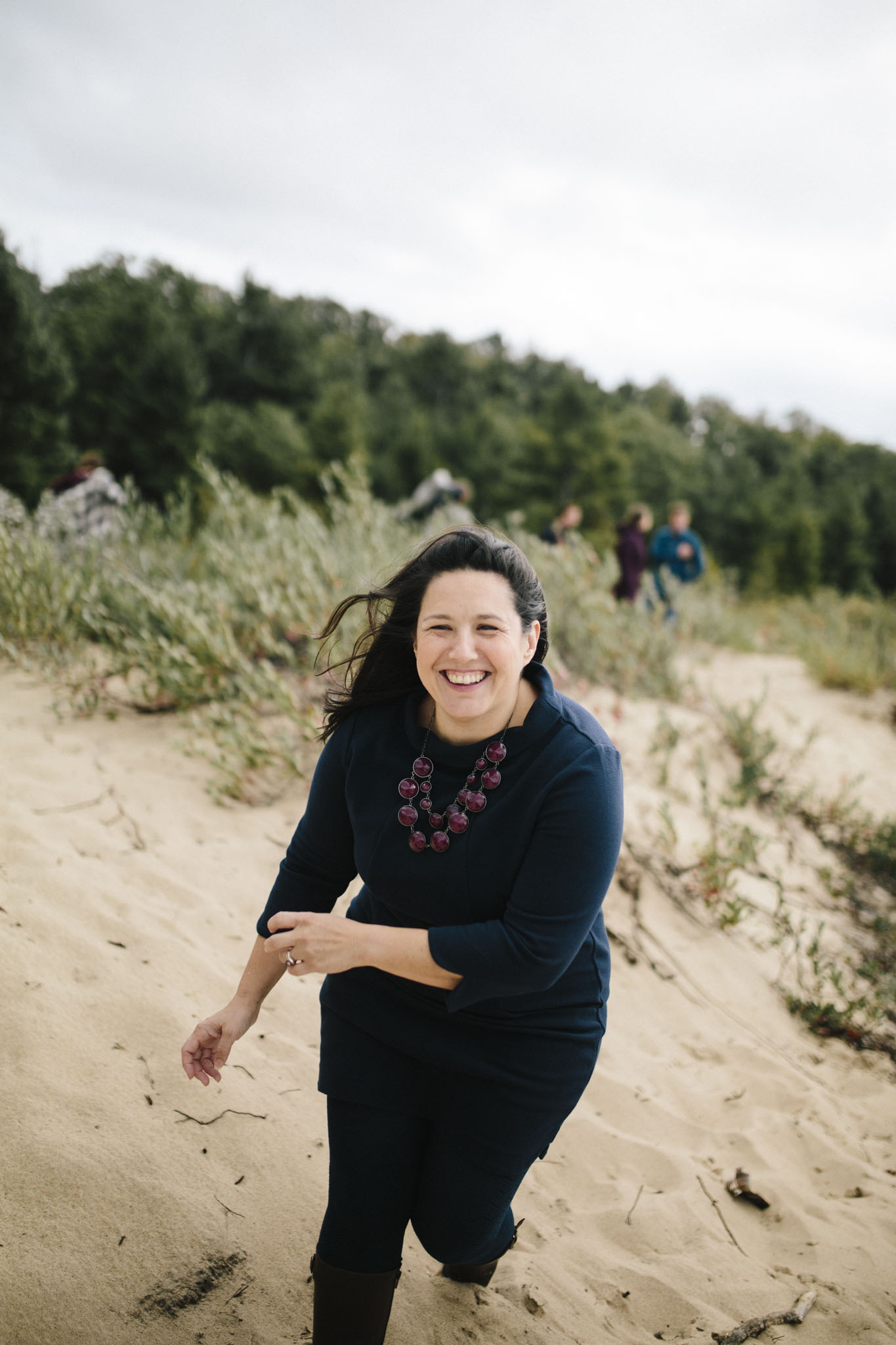
As a teenager in Chicago, Kelli Paige participated in a summer internship program with Friends of the Chicago River that turned into a career path. That summer, she learned about the reversal of the River’s flow from Lake Michigan in an effort to reduce pollution in the city’s main source of drinking water and improve public health for Chicago residents. The experience made an impression: it deepened her appreciation for natural resources, particularly aquatic ecosystems, and highlighted the critical role lakes and rivers play in providing services to people. It also spurred her to pursue a B.A. in public policy from DePaul University and then an M.S. in resource ecology and management from the University of Michigan. Since 2015, Paige has been the chief executive officer of the Great Lakes Observing System (GLOS), a non-profit that marshals real-time and historical data to facilitate science, policy, management and industry in the Great Lakes region. Paige spoke to ESAL about the data services GLOS provides and how these data facilitate management and policy needs in the region.
CK: What’s unique about the Great Lakes?

Kelli Paige
Paige: The Great Lakes are the largest freshwater ecosystem and the largest source of freshwater for drinking water in North America. They provide drinking water for over 40 million residents in the Midwestern United States and in Canada. It’s a really valuable resource for that purpose and because of its fisheries. Because the Lakes are shared between the U.S. and Canada, there are a lot of unique bi-national management agreements between both countries to make sure that the water quality and water levels are secured for future generations. This unique governance of a natural resource between two countries influences a lot of the policy and management of the Great Lakes. For instance, with the Great Lakes Compact, we need to make sure that people aren’t diverting the water or taking water out of the lakes for personal consumption. And then, for water quality purposes, we need to maintain certain standards for drinking water, as well as make sure that beaches are safe for people to go to. We also want to guarantee that aquatic habitat fisheries are viable and sustainable in the long term.
CK: What is GLOS and how does it help fill the needs of this massive and important resource?
Paige: We are a non-profit organization that provides end to end data services to support science, policy management, and industry in the Great Lakes. We were established to help support data collection and monitoring activities, as well as management to make sure that data are easy to access and comparable across different groups. We make sure that the data are easy to share, discover, and interpret so that people can use it to inform management and policy decisions.
We’re primarily funded through the National Oceanic and Atmospheric Administration (NOAA). NOAA manages the Integrated Ocean Observing System (IOOS), which established a partnership of all the different federal agencies that collect data across the oceans, coasts, and Great Lakes. Our role at GLOS, as one of eleven regional associations of the national program, is to take all of that coordination and make sure that relevant partners are engaged. For example, universities collect a lot of data and information, as do state and local government agencies. The private sector also does monitoring. And then all the Canadian counterparts to these groups also participate in monitoring activity. GLOS serves as that bi-national coordination entity across all those partners.
CK: What range of information do those groups collect?
Paige: We support a variety of observing assets or monitoring programs throughout the region. We work with university and local government partners to launch different monitoring platforms, which includes buoys, underwater gliders, high-frequency radar, and sensors that go on water utility intake pipes. Our partners span from Minnesota to upstate New York and into Ontario. We work with those data providers, and other groups that maybe are not necessarily funded through GLOS but are interested in sharing, to make their data web accessible.
CK: How are people using the data?
Paige: We have a couple of web tools right now in our portal, which is pretty much all of the data from various sources that we’re able to provide access to. That could include things like satellite imagery, modeled data, or raw data that is collected through observing platforms. It’s pretty much a fire hose of data. We also have a website called GL Buoys, which has data from the buoy networks. We find that a lot of people, particularly recreational boaters, like to be able to just see the data for a particular area. They are able to find out what the conditions are on the lake, such as wave height, wind speed, and water temperature. Some buoys have webcams on them too.
CK: I’m curious about the uses. What are some projects that have been undertaken or completed with GLOS data services?
Paige: Probably one of the most famous or infamous events that happened recently in the Great Lakes was the harmful algal bloom in Western Lake Erie in 2014. The algae were toxic, and the bloom presented a public health risk. People were not able to drink or use the water. The city of Toledo ended up issuing a “do not drink” order for the entire city. And this lasted for three days. Residents couldn't brush their teeth or take a shower. And this wasn't a situation where you could just boil the water; you just absolutely could not use the water.
It was a wake-up call. We hadn't experienced the conditions where water quality could deteriorate so quickly that it would catch the water treatment plants by surprise, and they wouldn't be able to treat the water in time. As a result, Ohio EPA provided grants to all the local water utilities in the area who were accessing water for drinking water purposes from Lake Erie to put sensors on their intake pipes. The sensors were giving them information about blooming algae or dissolved oxygen or indicators of water quality. They gave a better sense of the water quality as it was brought in for treatment, rather than waiting for the water to be in the system already and find out from a lab sample that the water wasn't safe. All the water utilities voluntarily decided to share their data and make it publicly available through GLOS because they saw that it was in their best interest.
This was a great first step in showing people the value of sharing data and making it more broadly available to folks. As a follow-up, GLOS has developed a text alert system about water quality and conditions, both for the utilities and for recreational users. At GLOS, we’re trying to be responsive to the changing trends and ways that people like to consume information.
CK: What’s in the future for GLOS?
Paige: We’ve recently launched an initiative called Smart Great Lakes. When I first started at GLOS, in 2010, I was doing focus group workshops with recreational boaters in upstate New York. They wanted three-day forecasts or week-long forecasts of lake conditions, but the cell service at that time was bad around the lake, so they preferred to look at the web portal on their desktop computers. And just in a few years, cell coverage over the lakes was much more reliable so recreational users preferred to look on smart phones. So, trends were changing quickly, and we decided that we wanted to be responsive and make sure the Great Lakes community could take advantage of the advances in technology. We’re kicking off the Smart Great Lakes initiative as a way to convene a large consortium of partners together around this vision, to develop a common strategy and a document to say, “these are our priorities” and “these are the needs of our region.”
Are you involved with an organization or effort that you think might be of interest to the ESAL community? Or have heard about an organization or initiative that you’d like to learn more about? Let us know here, and we may feature it in a future post.